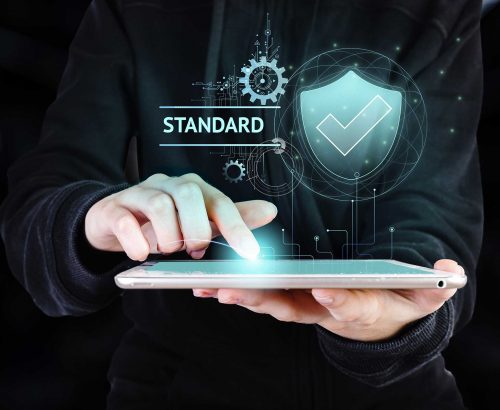Security Rating
Security risk rating is a method for assessing and quantifying the cybersecurity posture of an organization. This tools used to evaluate the security performance of a company by analyzing various risk factors and assigning a rating based on their overall security health. Here’s a breakdown of what this involves and the benefits it offers.
What is a Security Rating?

Assessment Criteria
Defend IT360 ealuate several dimensions of an organization’s security practices, including network security, application security, end point protection, patch management and more.
They might also look at compliance with industry standards and regulations.

Scoring System
Based on the evaluation, a numerical score or letter grade is assigned. This rating reflects the organization’s security posture. The scoring often takes into account factors like vulnerabilities, historical breaches, security practices, and external threats.

Risk Rating
The rating usually corresponds to a risk level, such as high, medium, or low. This helps in understanding how likely it is that the organization will face a significant security incident.
Benefits of Using Security Scorecards

Objective Assessment
Provides an impartial and quantifiable way to assess cybersecurity risk. This helps organizations understand where they stand compared to industry standards or their peers.

Benchmarking
Organizations can compare their security posture with others in the same industry or sector. This benchmarking helps in identifying areas of improvement and understanding competitive positioning.

Risk Management
By knowing their security score, organizations can prioritize remediation efforts based on the most critical vulnerabilities or weaknesses.

Vendor Risk Management
Businesses often use security rating to evaluate the security posture of their vendors or third-party partners. This helps in assessing potential risks that might arise from external relationships.

Continuous Monitoring
Security Rating offer continuous monitoring, which provides real-time updates on the organization's security posture. This helps in quickly identifying and addressing emerging threats.

Regulatory Compliance
Helps organizations track and maintain compliance with relevant regulations and standards, thus avoiding potential legal and financial penalties.

Informed Decision-Making
Provides stakeholders with actionable insights and data-driven recommendations for enhancing security measures and investments.

Improved Communication
Facilitates clearer communication about security risks and needs to both technical and non-technical stakeholders, including executives and board members.

